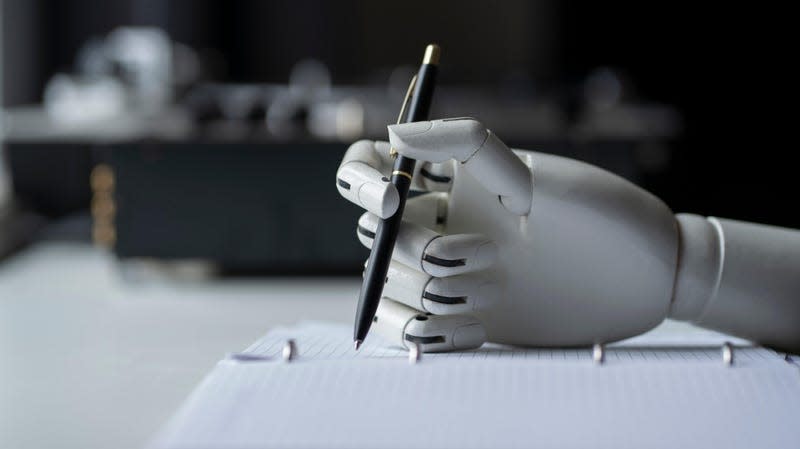University of Kansas Researchers Claim 99% Accuracy Detecting ChatGPT Fakes

Scientists from the University of Kansas published a paper Wednesday detailing an algorithm they say detects academic writing from ChatGPT with an accuracy rate over 99%.
As AI chatbot content begins to flood the world, one of the biggest concerns is reliably spotting the difference between the words of robots and real human beings. There have been a few attempts to build ChatGPT detectors, and dozens of companies are competing to build AI-spotting technology. But so far, none of the options work well, even one built by OpenAI, the company that made ChatGPT. The existing tools are so ineffective that they’re essentially useless.
Read more
The ChatGPT spotter described in the paper is only built to work in specific contexts, but its reported success seems promising. In the process of building it, the researchers say they’ve identified telltale signs of AI writing.
The paper, which was peer-reviewed and published in Cell Reports Physical Science, describes a technique that sniffs out AI-penned academic research articles. The study selected a set of 64 scientific researcher articles written by human authors across a variety of disciplines—from biology to physics. They fed that data to ChatGPT and used it to produce a data set of 128 AI articles with a total of 1,276 paragraphs worth of chatbot nonsense. The scientists use those bogus paragraphs to build their ChatGPT detection algorithm. Then they put together a new dataset to test their algorithm out with 30 real articles and 60 ChatGPT-written articles, amounting to 1,210 paragraphs in total.
The researchers claim their algorithm detected entire articles written by ChatGPT 100% of the time. It was less accurate but still impressive at the paragraph level: the algorithm spotted 92% of AI paragraphs.
The researchers hope others will use their work to tailor detection software to their own niches and purposes. “We tried hard to create an accessible method so that with little guidance, even high school students could build an AI detector for different types of writing,” said Heather Desaire, an author of the paper and a chemistry professor at the University of Kansas, in an interview with EurekAlert. “There is a need to address AI writing, and people don’t need a computer science degree to contribute to this field.”
The paper says there are a few telltale signs of ChatGPT’s work. For one, human writers write longer paragraphs, use a bigger vocabulary, include more punctuation marks, and tend to qualify their statements with words like “however,” “but,” and “although.” ChatGPT is also less specific with citations like figures and mentions of other scientists.
The model built by Desaire and co. won’t work out of the box for teachers hoping to penalize cheating high schoolers. The algorithm was built for academic writing, specifically the kind of academic writing you read in scientific journals. That’s a shame for instructors and administrators who, in general, spent the last six months freaking out over plagiarism facilitated by ChatGPT. However, Desaire said you can theoretically use the same technique to build a model that detects other kinds of writing.
Things fall apart when you consider the fact that a writer could easily make some small tweaks to a piece of chatbot writing and render it much harder to detect. Still, the researchers described this work as a “proof of concept,” and say they could develop a more robust and perhaps more accurate tool with a larger data set.
As promising as these results may be, tech companies and AI boosters say tools like ChatGPT are in their infancy. It’s impossible to say whether detection methods like this one will stand up if AI continues developing at the blistering pace we’ve seen over the last few years. The closer large language models get to replicating the murmurs of flesh-based human writing, the harder it will be to identify the traces of robot-speak.
Want to know more about AI, chatbots, and the future of machine learning? Check out our full coverage of artificial intelligence, or browse our guides to The Best Free AI Art Generators and Everything We Know About OpenAI’s ChatGPT.
More from Gizmodo
Sign up for Gizmodo's Newsletter. For the latest news, Facebook, Twitter and Instagram.

